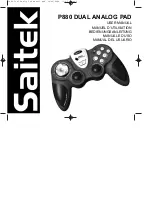
• Do not install the regulator in a location where there
can be excessive water accumulation or ice formation,
such as directly beneath a downspout, gutter or roof
line of building. Even a protective hood may not provide
adequate protection in these instances.
• Install the regulator so that any gas discharge through
the vent or vent assembly is over 0.91 m / 3 ft away from
any building opening.
Regulators Subjected to heavy
Snow Conditions
Some installations, such as in areas with heavy snowfall,
may require a hood or enclosure to protect the regulator
from snow load and vent freeze over.
Downstream Control line Installation
!
waRNINg
Failure to install a downstream control line
could result in a hazardous condition. Install
downstream control line(s) to the slam-shut
device when construction uses external
pressure registration. The regulator and
slam-shut device will not control pressure
or shut off if a downstream control line is
not installed on those constructions where
external pressure registration is required.
CSB700 Series regulators with an “ET” or “EN” in the type
number use external pressure registration. To communicate
the downstream pressure to the regulator, connect a
downstream control line tubing to the 3/4 NPT control line
tapping in the lower diaphragm casing and connect the other
end of the tubing downstream of the regulator outlet with a
minimum distance of 6 times the outlet pipe diameter.
For all types with external control lines, use tubing with an
inner diameter of 16 mm / 0.63 in. or larger.
Downstream Control Line Installation with
Slam-Shut Device
Refer to Figure 6. When installing the Types CSB704ET,
CSB704FET, CSB704FEN CSB704EN, CSB724ET,
CSB724EN, CSB724FET, CSB724FEN and CSB754EN
regulators, connect downstream control line tubing to the
lower casing of the regulator and run the tubing downstream
of the regulator outlet with a minimum distance of 6 times
the outlet pipe diameter. Connect a second, separate
downstream control line tubing to the lower casing of
the slam-shut and run the tubing downstream of the
regulator outlet a minimum distance of 6 times the outlet
pipe diameter.
For all types with external control lines, use tubing with an
inner diameter of 16 mm / 0.63 in. or larger for the primary
regulator and 6.4 mm / 0.25 in. or larger for the slam-shut.
Installation with External Overpressure Protection
If the regulator is used in conjunction with a Type 289H
relief valve, it should be installed as shown in Figure 5.
The outside end of the vent line should be protected with a
rainproof assembly. The Type 289H is typically set 25 mbar /
10 in. w.c. higher than the outlet pressure setting of the
regulator, up to 75 mbar / 30 in. w.c. outlet pressure. For
pressure greater than this, set the Type 289H 0.05 bar /
0.73 psi higher than the outlet pressure setting of the
regulator. Refer to the 289 Series Instruction Manual
(D100280X012) for more information.
Vent Line Installation
CSB700 Series regulators have a 1 NPT screened vent
opening in the spring case. If necessary to vent escaping
gas away from the regulator, install a remote vent line in
the spring case tapping. Vent piping should be as short
and direct as possible with a minimum number of bends
and elbows. The remote vent line should have the largest
practical diameter. Vent piping on regulators with token relief
must be large enough to vent all relief valve discharge to
atmosphere without excessive backpressure and resulting
excessive pressure in the regulator.
For types with optional token relief, this low capacity relief
is located in the spring case of the primary regulator. If
necessary to vent escaping gas away, install a remote vent
line in the spring case tapping of the primary regulator as
described above. Periodically check all vent openings to be
sure that they are not plugged or obstructed.
For Types CSB700/CSB700F/CSB720/CSB720F, outlet
pressure higher than 0.34 bar / 5.0 psig above the setpoint
may damage internal metallic parts. For Type CSB750,
outlet pressure higher than 1.5 bar / 21.8 psig above the
setpoint may damage internal metallic parts.
The maximum
emergency (casing) outlet pressure for all types is
4.0 bar / 58 psig except for Type CSB750 which is
5.0 bar / 72.5 psig.
CSB700 Series
12









































